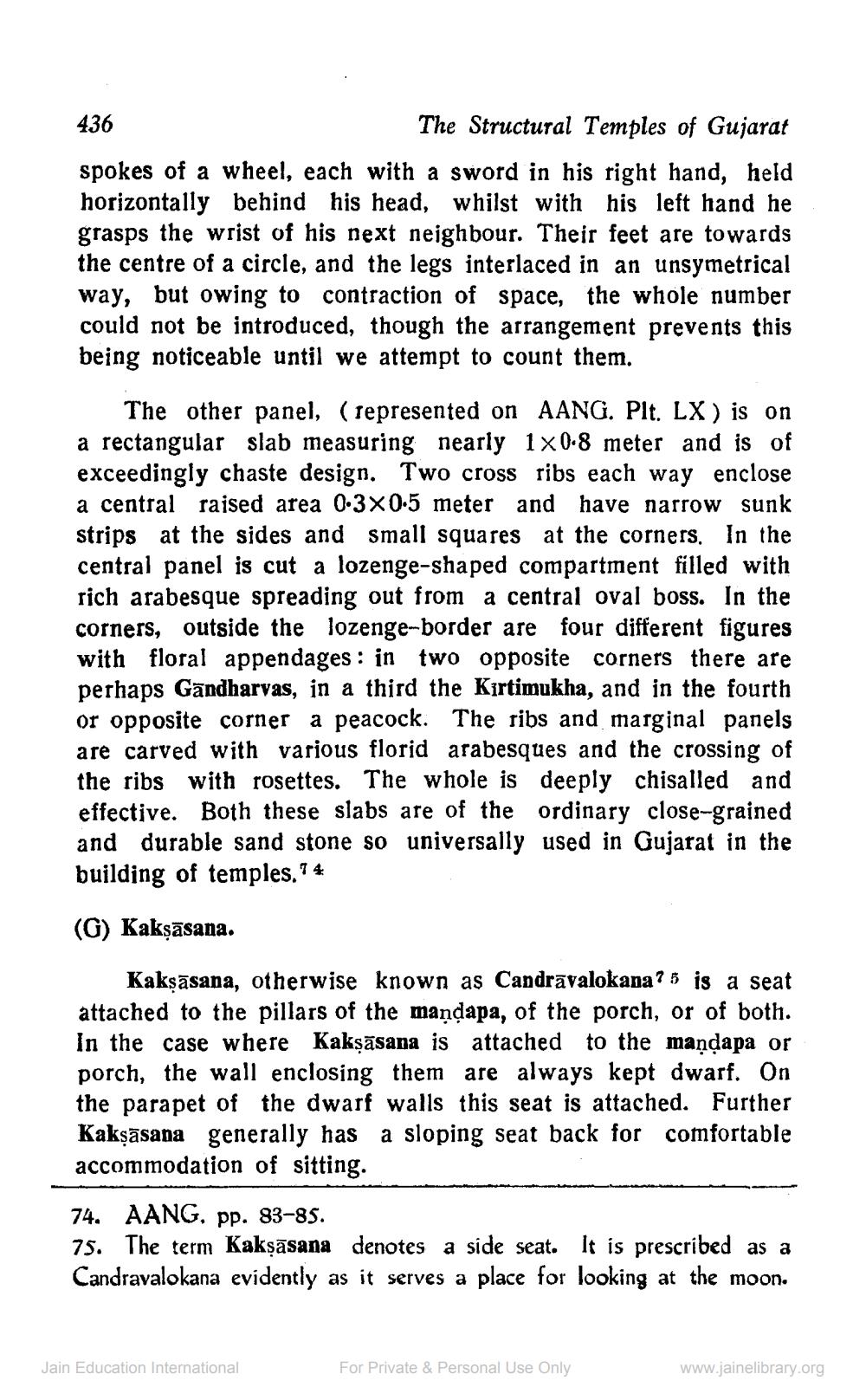________________
436
The Structural Temples of Gujarat spokes of a wheel, each with a sword in his right hand, held horizontally behind his head, whilst with his left hand he grasps the wrist of his next neighbour. Their feet are towards the centre of a circle, and the legs interlaced in an unsymetrical way, but owing to contraction of space, the whole number could not be introduced, though the arrangement prevents this being noticeable until we attempt to count them.
The other panel, (represented on AANG. Plt. LX) is on a rectangular slab measuring nearly 1x0.8 meter and is of exceedingly chaste design. Two cross ribs each way enclose a central raised area 0.3x0.5 meter and have narrow sunk strips at the sides and small squares at the corners. In the central panel is cut a lozenge-shaped compartment filled with rich arabesque spreading out from a central oval boss. In the corners, outside the lozenge-border are four different figures with floral appendages : in two opposite corners there are perhaps Gandharvas, in a third the Kirtimukha, and in the fourth or opposite corner a peacock. The ribs and marginal panels are carved with various florid arabesques and the crossing of the ribs with rosettes. The whole is deeply chisalled and effective. Both these slabs are of the ordinary close-grained and durable sand stone so universally used in Gujarat in the building of temples.7 4
(G) Kakṣāsana.
Kaksāsana, otherwise known as Candravalokana? 5 is a seat attached to the pillars of the mandapa, of the porch, or of both. In the case where Kakşāsana is attached to the maņdapa or porch, the wall enclosing them are always kept dwarf. On the parapet of the dwarf walls this seat is attached. Further Kakşāsana generally has a sloping seat back for comfortable accommodation of sitting. 74. AANG, pp. 83-85. 75. The term Kakṣāsana denotes a side seat. It is prescribed as a Candravalokana evidently as it serves a place for looking at the moon.
Jain Education International
For Private & Personal Use Only
www.jainelibrary.org




